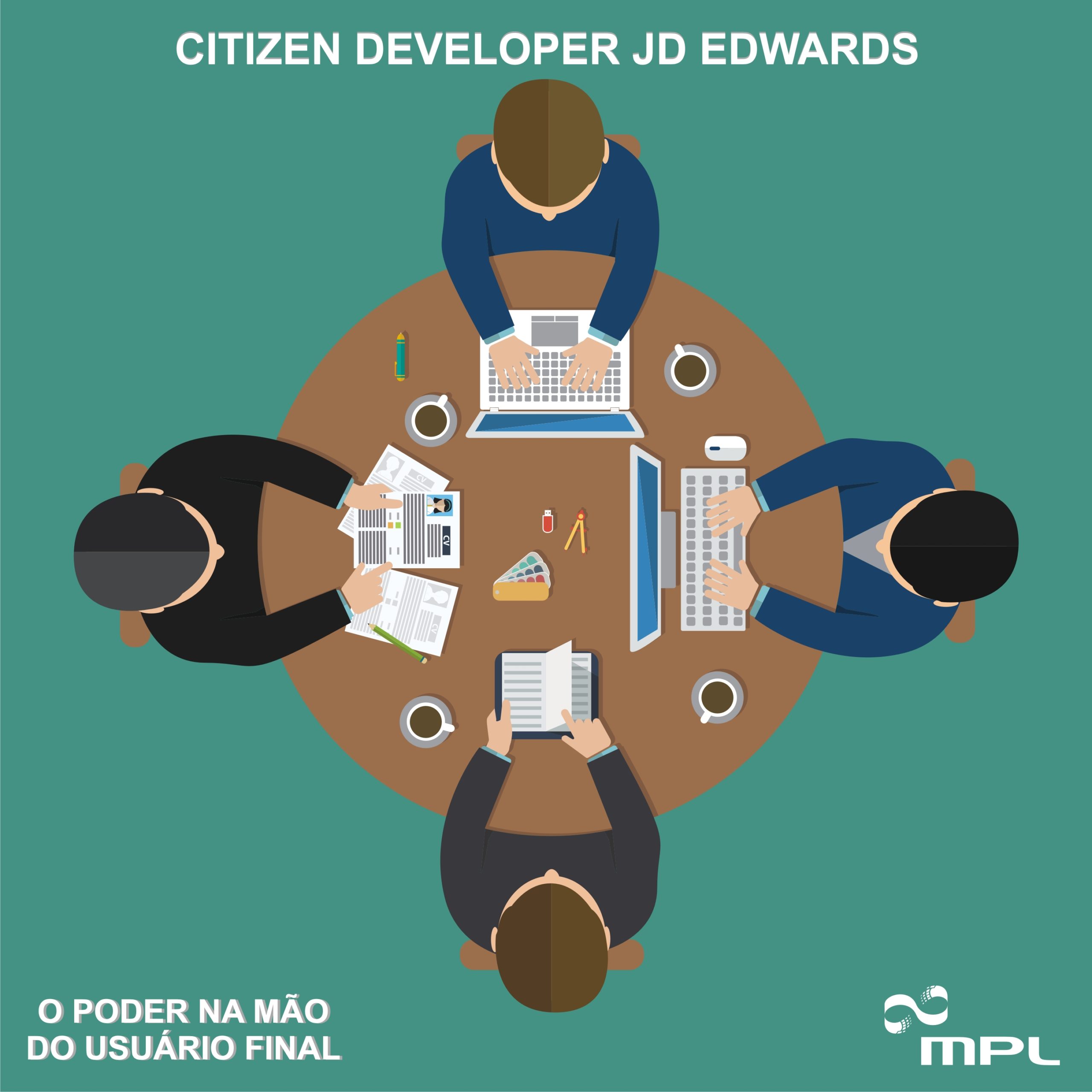
28 Oct The power in the hand of the end user – Citizen Developer JD Edwards
Power in the hand of the end user – Citizen Developer JD Edwards.
Technological innovation in a volatile market.
If you asked yourself what the definition of technological innovation is, which answer would seem the most correct? Is technological innovation a tool for increasing productivity? A cost-cutting action? A means to control your processes more broadly? Probably all of these answers are right. When we search on Google, the result is this:
"Tecnologic innovation is a term applicable to innovations in Law Suit it's from products[1]. In general, it is any novelty implemented by the productive sector, through research or investments, and that increases the efficiency of the production process or that implies a new or improved product or service…”
We can define that technological innovation is about maintaining products, processes and services with more productivity, less costs and in optimized processes.
The crux of the matter is how to use technology in a way that is adaptable to volatile demands. When you have a product and decide to improve its production process with the help of technology, you are sure that you are investing time and resources to that one specific process improve.
However, the market is competitive and extremely volatile. What is in demand today, may not be tomorrow. While something that is stopped today, may have an absurd demand in the future. This is how consumption and the market work. Those who don't follow him are left behind, missing opportunities.
Citizen Developer – The power in the hand of the end user.
In this line of reasoning, it is expected that market demand will begin to dictate where technology investments need to be applied. The problem is that this can be frighteningly expensive.
Imagine that you manufacture product A and set up the entire production and manufacturing process for that product. It invested in cutting-edge technology and applied it directly to improve its place in the market as much as possible. This can work for days, weeks and months until your end consumer begins to demand another product, which requires another type of technology and a whole reinvestment.
Are you going to let this consumer down? Will it open space for a competitor to enter and meet this consumption need? Will your market share decrease? I believe that none of these options are viable to maintain your constant growth, right?
But, there is a solution to keep your technology up to date and adherent to your business processes. This solution is called “citizen developer”
Citizen developer is a concept where the end user creates new business applications for their own use or for others, in a development environment. This concept focuses on better understanding the end user's needs and providing tools for them to develop their own applications that meet their needs and improve their experience.
In the example given above, if your end consumer required another product, with another process and other technologies, it was only necessary for the end user to develop a new process for the new product from the existing technology. No higher costs, no complications with all the power of technology in the hands of the end user.
JD Edwards and Citizen Developer.
The concept of citizen developer needs to be studied and implemented in an ERP that covers all the possibilities so that the development is done by the end user in a correct way. It is necessary to say that there are limitations in the development and that complex modifications or creations of complex processes will need a professional specialist in the area.
JD Edwards already has several tools available, minimizing the need for development during deployment. You can see some new JDE news and tools at Summit 2016, on that link.
Oracle is encouraging the formation of “citizen developers” among partners, as they are expected to be more prepared and assertive for any type of development, as they are closer to the customers, and consequently to the problem.


No Comments